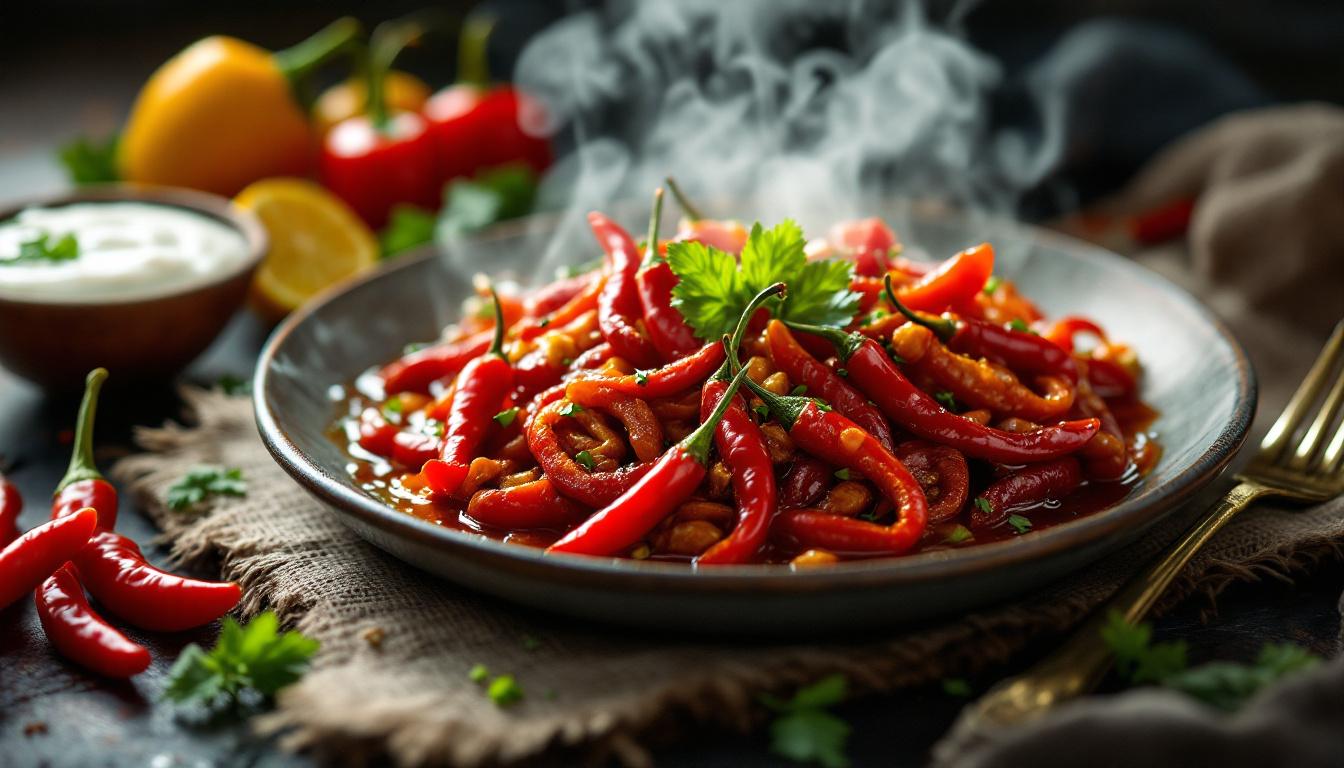That spicy food burning your mouth isn’t something you simply have to endure. Nearly 25% of people experience heightened sensitivity to spicy foods, yet most don’t realize there are natural ways to build tolerance without sacrificing flavor. What if you could gradually transform from heat-avoider to spice enthusiast without medication?
Why your body reacts to spice
Spice sensitivity isn’t an allergy but a physical reaction to capsaicin, the compound that gives chili peppers their heat. “When capsaicin binds to pain receptors in your mouth, your brain interprets it as actual burning,” explains Dr. Mariah Chen, nutritionist and food sensitivity specialist. “This triggers inflammation and that familiar burning sensation.”
Your reaction to spicy foods can also connect to gut health and overall well-being. The inflammatory response from spicy foods can either irritate or, surprisingly, benefit your digestive system depending on your microbiome.
Building tolerance gradually
Like training for a marathon, spice tolerance requires consistent practice. Start with these beginner steps:
- Begin with mild spices like paprika or cumin
- Add tiny amounts to familiar dishes
- Increase quantity slightly each week
“The nervous system adapts remarkably well to repeated stimuli,” notes gastroenterologist Dr. James Wong. “I’ve seen patients transform from avoiding black pepper to enjoying moderate amounts of jalapeño within 3-4 months of consistent exposure.”
Nature’s spice neutralizers
When heat overwhelms your palate, reach for natural remedies instead of water. Dairy products contain casein that binds to capsaicin, effectively washing it away from pain receptors. This explains why cultures with the spiciest cuisines often pair them with yogurt-based sides.
Consider incorporating these natural heat tamers:
- Full-fat yogurt or milk with spicy meals
- Coconut milk as a dairy alternative
- Warm salt water rinses after intense heat exposure
These approaches work like ancient healing remedies – simple yet remarkably effective. The proteins in dairy act like tiny firefighters, dousing the chemical flames of capsaicin.
Unexpected benefits of embracing the heat
After struggling with spice sensitivity for years, Rebecca Winters discovered an unexpected connection. “When I gradually increased my spice tolerance, my chronic headaches decreased significantly. The anti-inflammatory properties of many spices seemed to help my overall system.”
Fermented spicy foods like kimchi and spicy pickles offer a double benefit – they introduce heat gradually while providing probiotics that support gut immunity. The way you prepare these foods matters too; proper cutting techniques preserve their nutrients.
Your path to spice enjoyment
Think of spice tolerance like wading into cold water – rushing creates shock, but gradual immersion allows adaptation. Start by adding just a dash of mild chili powder to familiar dishes. Each week, slightly increase the amount or intensity.
When discomfort strikes, reach for dairy instead of water. Practice mindful consumption by focusing on your breathing through initial heat sensations. Remember that building tolerance is a marathon, not a sprint – your taste buds and nervous system need time to adapt.
The journey from spice-sensitive to spice-enthusiast offers more than just culinary adventure – it potentially unlocks anti-inflammatory benefits and introduces your palate to a world of flavors previously deemed off-limits. Your future self might thank you with every delicious, spicy bite.
